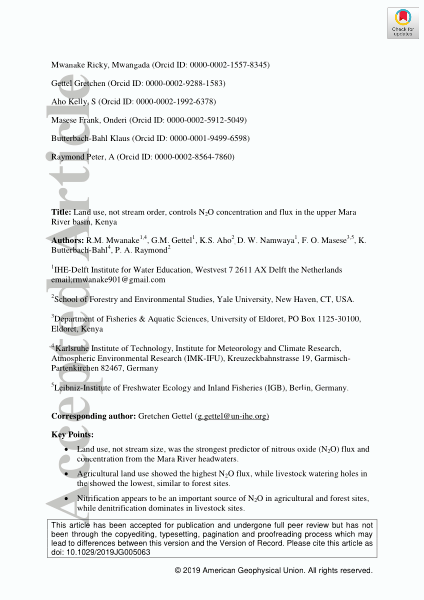Land Use, Not Stream Order, Controls N2O Concentration and Flux in the Upper Mara River Basin, Kenya
Abstract
Anthropogenic activities have led to increases in nitrous oxide (N2O) emissions from river systems, but there are large uncertainties in estimates due to lack of data in tropical rivers and rapid increase in human activity. We assessed the effects of land use and river size on N2O flux and concentration in 46 stream sites in the Mara River, Kenya, during the transition from the wet (short rains) to dry season, November 2017 to January 2018. Flux estimates were similar to other studies in tropical and temperate systems, but in contrast to other studies, land use was more related to N2O concentration and flux than stream size. Agricultural stream sites had the highest fluxes (26.38 ± 5.37 N2O-N μg·m–2·hr–1) compared to both forest and livestock sites (5.66 ± 1.38 N2O-N μg·m–2·hr–1 and 6.95 ± 2.96 N2O-N μg·m–2·hr–1, respectively). N2O concentrations in forest and agriculture streams were positively correlated to stream carbon dioxide (CO2-C(aq)) but showed a negative correlation with dissolved organic carbon, and the dissolved organic carbon:dissolved inorganic nitrogen ratio. N2O concentration in the livestock sites had a negative relationship with CO2-C(aq) and a higher number of negative fluxes. We concluded that in-stream chemoautotrophic nitrification was likely the main biogeochemical process driving N2O production in agricultural and forest streams, whereas complete denitrification led to the consumption of N2O in the livestock stream sites. These results point to the need to better understand the relative importance of nitrification and denitrification in different habitats in producing N2O and for process-based studies.

